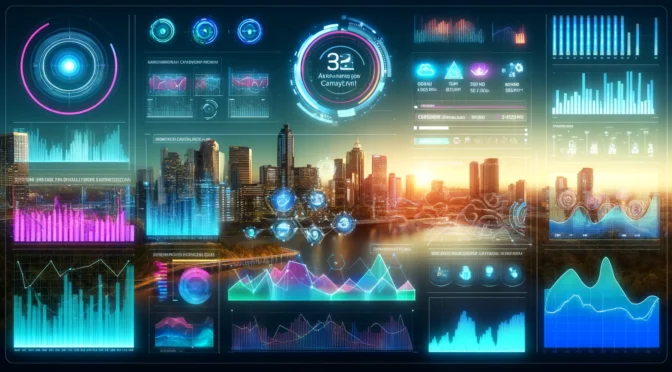BLOG
How Animation Gives Life to Design

Traditional media has long been synonymous with static imagery, from print publications to websites, Instagram and Facebook posts, billboards, and advertisements, the focus has primarily been on delivering information through static visuals. However, as technology advances and user expectations evolve, we are witnessing a significant shift towards dynamic mediums such as video and animation.
This transition reflects a fundamental change in how we communicate and engage with content.
Video and animation offer a level of immersion and storytelling capability that static media simply cannot match. They bring designs to life, allowing for fluid movement, interactive elements, and captivating narratives. As a result, designers are increasingly embracing these dynamic mediums to create more engaging and memorable experiences for their audiences. From social media posts to website headers, the rise of video and animation signals a new era in design, where motion and interactivity reign supreme.
Why incorporate video into your Social Media Strategy?
As a User Experience and Interface designer, I’ve always been fascinated by the idea of creating experiences that meet user’s needs, but also leave a lasting impression. Forbes found that viewers retain 95% of a message when they watch it on video, compared to 10% when reading it in a text. The increase in click-through rate (CTR) with video is as high as 96%, and videos are shared 1200% more times than links and text combined. (Source: Forbes 2017).
Dynamic content is crucial for differentiation against static assets primarily because it not only captures attention, but also creates meaningful connections with audiences, ultimately driving better outcomes for businesses and brands.
Here are some key advantages of using animation in your social media strategy:
- Enhanced user experience: Dynamic content provides a more immersive and interactive user experience compared to static assets. It can capture users’ attention and encourage them to explore further, resulting in increased engagement and longer interaction times.
- Storytelling and emotion: Video and animation have the power to convey stories and evoke emotions in ways that static assets cannot. Through movement, sound, and visual effects, dynamic content can create compelling narratives that resonate with audiences on a deeper level.
- Visual appeal and branding: Dynamic content allows for more visually appealing and branded experiences. By incorporating animations, transitions, and video elements, designers can create a unique aesthetic that reflects the personality and values of the brand.
- Information retention: Studies (such as the Forbes research I mentioned above) have shown that people tend to retain information better when presented in a dynamic and interactive format. Dynamic content can help convey complex ideas more effectively and leave a lasting impression on viewers.
- Competitive edge: In today’s digital landscape, where attention spans are short and competition is fierce, dynamic content can help businesses stand out from the crowd. It can differentiate a brand by offering a more engaging and memorable experience that sets it apart from competitors relying solely on static assets.
Decoding animation: Essential terms and definitions
Now that we’ve covered the benefits of incorporating dynamic content into your strategy and proven results, let’s go over some of the basic terms used in the animation industry.
Timeline
A timeline is a graphical representation of the sequence of frames or keyframes in an animation. It shows the progression of time, allowing animators to organise and manipulate the timing of elements within their animation.
Frame rate
The number of frames or images displayed per second in an animation. It determines the smoothness of motion in the animation, with higher frame rates generally resulting in smoother and more fluid animations.
Keyframes
Specific frames within an animation where a change or transition occurs. They define the starting and ending points for an animation sequence, with intermediate frames generated automatically by the animation software to create the illusion of motion between keyframes.
Timing
The speed and rhythm at which elements move or change over time. It involves determining the duration and sequencing of actions within an animation to create a desired effect or emotion.
Spacing
Distribution and arrangement of keyframes or animation frames along the timeline. It determines the pace and flow of movement within the animation, with variations in spacing affecting the perception of speed and acceleration.
Easing
Process of adding gradual acceleration or deceleration to an animation to create more natural and organic movement.
Compositing
Combining multiple visual elements, such as images, videos, and animations, to create a cohesive and visually appealing final composition.
Embracing animation: How to get started
As a traditional User Experience and Interface designer, entering the world of animation felt daunting at first, but by utilising the right approach and minimal resources, anyone can begin their journey toward dynamic content.
Begin by exploring the wealth of resources available, including online courses, tutorials, and software documentation. Selecting the right animation software is crucial, so take the time to research and experiment with different options.
If you have an existing Adobe licence, I would recommend starting with Premiere Pro (which is predominantly used for video editing) to learn the basic timeframe user interface, also arranging your workspace to better suit your animation touch points. You can then advance to Adobe After Effects, or more complex 3D software such as the open-access software Blender, Cinema 4D, or Autodesk Maya. There is a plethora of video tutorials available online to assist in learning the key animation principles like timing, spacing, and keyframes.
Don’t hesitate to experiment with different techniques and styles, and seek feedback from peers and mentors to aid in your growth. Stay inspired by keeping your eyes peeled for interesting dynamic compositions and transitions, continually learning from workshops or industry events to develop your personal style. The more you practise and experiment with different effects and keyframe transitions, the more you will enrich your design projects with captivating motion and creativity.
Elevating design experiences: The transformative power of animation
Incorporating video into your social media strategy presents an unparalleled opportunity to captivate and engage your audience on a deeper level. Understanding the essential terms and definitions of animation is crucial as you embark on this journey, allowing you to effectively communicate and harness the power of visual storytelling.
Embracing animation and getting started may seem daunting at first, but by following the steps outlined, you’ll unlock endless possibilities to bring your brand to life and create memorable experiences for your audience. By weaving together the elements of video content and animation, you’ll not only enhance your social media strategy but also forge stronger connections and drive meaningful results for your business and brand.
If you’re keen to keep reading about motion, dynamic editing, animation and video content, check out this blog. Happy animating!














